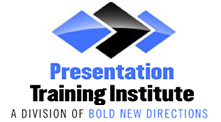Be Passionate
A speaker who is passionate about their topic will pass that same enthusiasm on to their audience. When you are excited and motivated about a topic, your overall presence will be contagious and your audience will share in that same excitement. Therefore, be confident and show the audience just how much you care. This is a great way to connect with them and get them interested in your topic.Â
Have a Strong Opener
They say first impressions are everything so it’s important to start your presentation off on the right foot. You only have about 2-3 minutes to capture your audience’s attention. Therefore, opt for something bold and interesting. Perhaps you can share a startling fact or statistic. You could also begin with an interesting prop and find a way to relate it to your topic. You may also want to ask an audience member to join you on stage. However you decide to do it, just make sure that you captivate your audience right from the start.Â
Tell Stories
Presented alone, facts and data can be very boring and can feel more like a lecture than a presentation. Instead, try incorporating short, powerful stories that are relevant to your topic. Storytelling is one of the oldest forms of communication and has always remained a popular way to share information. Stories will make your presentation far more engaging and memorable.Â
Make Eye Contact
The best way to connect with your audience on a personal level is by making eye contact with them. Therefore, look directly at members of your audience when speaking. This will keep them engaged in the presentation and make them feel as though they are part of a conversation. In addition, good eye contact projects confidence and authority.Â
Showcase Your Personality
Everyone has different personality styles and unique talents that make them who they are. Think about your own personality style and how you can infuse that into your presentation. For example, are you funny? Are you a great storyteller? Are you full of energy and enthusiasm or do you tend to have a softer voice that can calm a crowd? Whatever your personality, use it and be yourself! Audiences love authenticity and you will be far more memorable if you simply are yourself.Â
Don’t ReadÂ
There is nothing worse than sitting through a presentation where the speaker reads every slide verbatim. PowerPoints and slideshows can be a great tool for enhancing your presentation, but they were not created to act as a script. The point of a slide presentation is to use short bullet points or images to get you talking about each point. The rest should come from you. Remember to engage your audience in a conversion and never read to them.Â
Use Body Language Effectively
Your voice is actually just a small part of your overall presentation. Believe it or not, your body language is just as important as the words you speak. In fact, nearly three-quarters of communication is non-verbal, meaning your body language plays a vital role in getting your message across to the audience. Therefore, make sure you are sending the right message by avoiding crossed arms and hands in your pockets. Your gestures should be open and confident. Use your hands appropriately, move around the stage when you are speaking, look people in the eyes and remember that your body language should be inviting people to listen to you.Â
